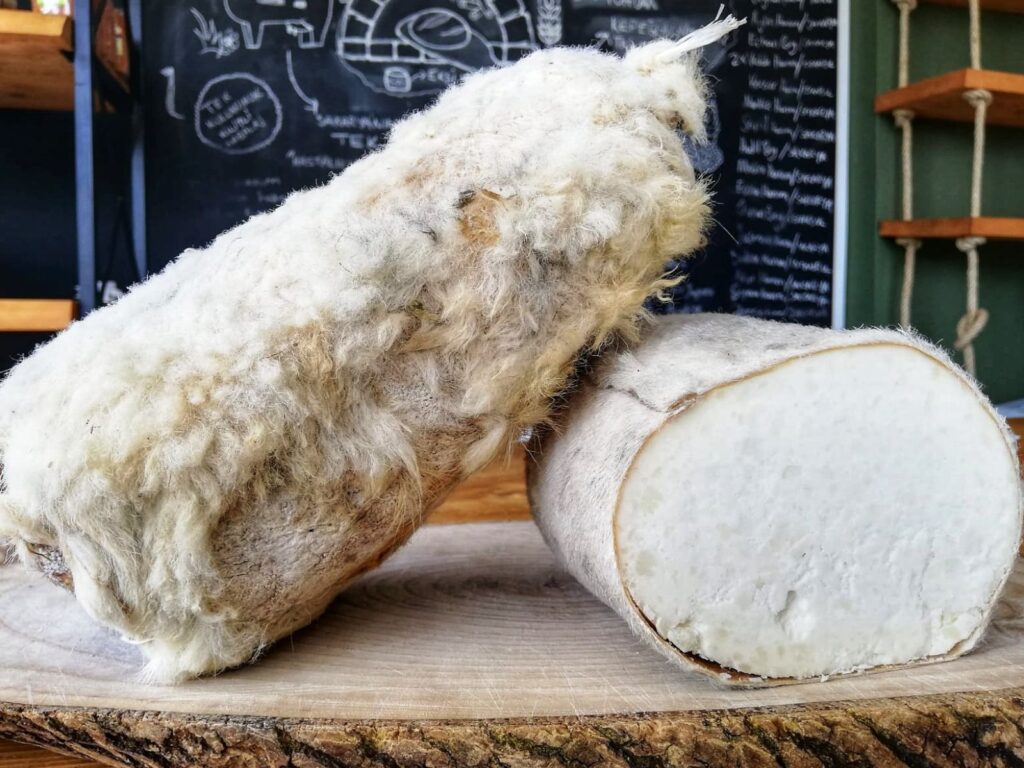Gjetost is a Norwegian cheese that has gained popularity for its unique caramel-like flavour and texture. In this blog post, we will explore the origin, production methods, flavour and best pairings for this cheese.

What is Gjetost?
Gjetost cheese originated in Norway, where it has been made for hundreds of years. The name “gjetost” comes from the Norwegian words “gjet” meaning goat and “ost” meaning cheese.
As its name indicates, it is made using the leftover whey from goat’s milk being used to make cheese. Traditionally, Norwegian farmers would boil down their goat’s whey until it caramelised into a solid brown block. In addition to Gjetost, Norwegians also make a cow’s milk version of this “cheese” called Brunost.
Who makes Gjetost?
The history of Gjetost dates back to the Viking era, where it was a staple food for the Norsemen during their long voyages. The cheese was known for its long shelf life and its ability to provide energy and sustenance during long periods of travel. Over time, it became a popular cheese in Norway and has since gained popularity worldwide.
Gjetost cheese is primarily produced in Norway, although it is also made in other Scandinavian countries and some parts of the United States. In Norway, the cheese is produced in the mountainous regions, where goats are raised.
Some of the most well-known producers of brown cheese include:
- Tine, a Norwegian dairy company
- Ski Queen, a brand of Gjetost cheese that is sold in the United States.
- Other producers of include Jarlsberg, Ekte Gjetost, and Nøttebrun.
Production method
Gjetost cheese is made by boiling down whey from goat’s milk until it caramelises into a solid block. Typically, artisans produce small batches and the boiling process can take several hours. The resulting cheese has a distinct sweet and savoury flavour, as well as a creamy texture.
Gjetost cheese has a unique flavour that is both sweet and savoury. Moreover, it has a caramel-like flavour with hints of butterscotch and a slightly nutty taste. And its texture is soft and creamy, and it is easy to spread on crackers or bread. The aroma of the cheese is mild and slightly sweet.
Serving guide
Gjetost cheese pairs well with a variety of foods, including fruit, nuts, and bread. Some of the best pairings for Gjetost include:
- Apples or pears
- Walnuts or almonds
- Rye bread or sourdough bread
- Honey or maple syrup
- Lingonberry jam or other tart fruit preserves
Alternatives to Gjetost
If you are looking for alternatives to Gjetost, consider trying:
Brunost – a cow’s milk version of brown cheese which is sweeter and less tangy.
Buttermilk Ricotta – another whey cheese. But unlike Gjetost or Brunost, it is not cooked until it caramelises. Nevertheless, Ricotta is a fantastic spread.
Thank you for reading
Thank you for reading this post about yet another amazing artisanal cheese. Have you tried this cheese before? Drop us a comment below with your thoughts.
If you enjoy learning about new cheeses, you can subscribe to our newsletter below. You will hear from us about once a week as we share new cheese profiles with you.
Finally, keep scrolling to find some more cheeses and recipes that have been recommended for you. Keep it cheesy!



